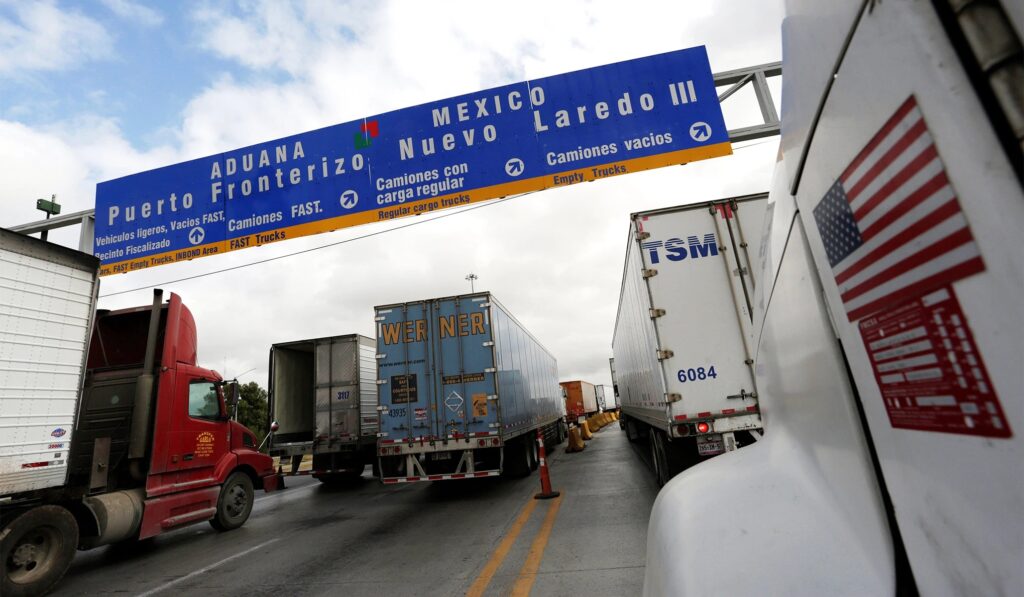Three Considerations for Choosing a Cross-Border 3PL

Whether to solve existing supply chain issues or to make good supply chains even better, many companies are now cultivating shorter supply chains that boast greater agility during disruptive circumstances. As a result, North American warehouses and distribution centers are increasingly shifting to Mexican and Canadian-based suppliers, rather than overseas counterparts, to simplify supply chains and improve fulfillment processes. While this is a step in the right direction, companies are finding that shorter and simpler doesn’t mean easier.
Sourcing in Mexico and Canada requires experience in cross-border logistics—choosing the right partner is high stakes.
The Challenges of Cross-Border Logistics
Shipping across borders requires a unique set of considerations. Warehouses, cross-docking facilities, and distribution centers in the United States must account for potential delays caused by inspection agencies when navigating the complexities of shipping between Canada and Mexico.
In fact, recent changes from the Department of Homeland Security are now requiring 100% of all vehicles coming from Mexico to be screened with Customs and Border Protection (CBP), raising concerns about further exacerbating border congestion. While transit over the U.S.-Canadian border is significantly quicker than its southern counterpart, maneuvering freight across the northern border can still be tricky business.
While there are considerable challenges to cross-border logistics, it is still significantly more efficient, in many cases, than overseas shipping, which continues to face unprecedented delays and supply chain disruptions.
Furthermore, companies nearshoring their supply chains need not navigate these complexities by themselves. To take full advantage of the benefits associated with nearshoring without the difficulty of learning cross-border logistics from scratch, companies often turn to third-party logistics (3PL) providers.
Cross-Border 3PLs: Three Considerations
By partnering with a 3PL, businesses are able to focus on their core competencies without throwing transportation management and cross-border logistics into the mix. The right 3PL partner will bring decades of experience and relationships to the partnership, helping businesses navigate the complexities of cross-border logistics, ensuring their shipments arrive on time, every time.
While many 3PLs offer cross-border logistics services, their quality ranges widely. Here are three key considerations when evaluating the cross-border services of a 3PL:
1) Prioritize Strategic Geography
Homeowners know that when it comes to real estate, location is everything. The same is true for logistics companies. When considering a 3PL partner for cross-border services, it is important to ask about their presence in three places:
- At the border
- On the Canada/Mexico side of the border
- On the U.S. side of the border
The CBP recognizes 328 ports of entry throughout the United States. Having warehousing or cross-docking options near those points is crucial to executing smooth and timely cross-border shipments. Despite the fact that many 3PLs may offer cross-border services, some of them do not have trained staff at or near the border.
When problems arise and logistics experts are not nearby, solving these time-critical problems can be much more difficult. By prioritizing a 3PL partner that has strategic locations along the U.S. border, companies ensure that knowledgeable personnel will be present where most needed: the border crossing.
Additionally, it’s important that 3PLs have strategic locations further inland of the border on either side. Having cross-border logistics experts present at the border should be a minimum requirement for considering a 3PL provider with cross-border services. But it’s also important to choose a 3PL partner with personnel present on both sides of the border. A 3PL company with trained staff in the United States as well as Mexico and Canada can take advantage of a more robust infrastructure of locations and offer higher-quality service grounded in deep relationships with carriers and customs brokers.
2) Utilize LTL for an Efficient Hub and Spoke Style Distribution Model
Flexibility is key to logistics, and utilizing less-than-truckload (LTL) shipping provides more flexible shipping options for distributors with faster transit times and lower costs. However, coordinating LTL shipments is complicated. It requires sophisticated management, and to get the most out of it, a 3PL company must have a large network of consolidation points. This network should include sites for cross-docking, transloading, as well as short-term and long-term warehousing.
While some 3PLs offer customer consolidation, which places responsibility and liability on the customer, others offer true LTL consolidation for cross-border shipments which maximizes trailer utilization, reduces mileage, and reduces handling—all of which result in lower prices. After all, cross-border logistics isn’t just about filing paperwork to get shipments across the border. It’s ultimately about getting products to their final destination on time, on budget, and damage free.
3) Look for Highly Trained, Bilingual Staff
When companies nearshore operations to Mexico, one new challenge is the language barrier. Given the complications of cross-border logistics and the possibility for changes at a moment’s notice, clear communication between all parties involved is critical. To remain competitive and ensure that shipments are made efficiently, 3PLs must have highly trained personnel ready to do business in various languages.
Relying on translators for skilled staff can result in vastly different customer service for shippers depending on their location. When skilled staff are available to do business in both languages, customers on both sides of the border receive the same level of quality, and shipments are handled with the same level of care.
Rolling into a Successful Future
As concerns over an economic recession loom large, many companies are looking to nearshoring as a way to become more adaptable to consumer changes. In uncertain times, shippers can’t afford the 60-to-90-day lead time for products sourced from Asia. The future for many companies will involve diversified supply chains to mitigate risk and adapt quickly to changing environments, whether from pandemics, inflation, or whatever may come next.
Cross-border shipping will always have unique nuances depending on the global political environment, changing government-mandated compliance standards, and unforeseen events. However, with innovative strategies for operations and a 3PL provider that can share valuable insights, operations can roll smoothly for years to come.
Andrew Welling is the director of cross-border services at TA Services. With more than a decade of transportation management experience including shipping, transloading, consolidation, 3PL, and international logistics, Welling brings a diverse background to customers. He earned his graduate degree in business administration, finance and his undergraduate degree in supply chain management, marketing, and international Studies.

